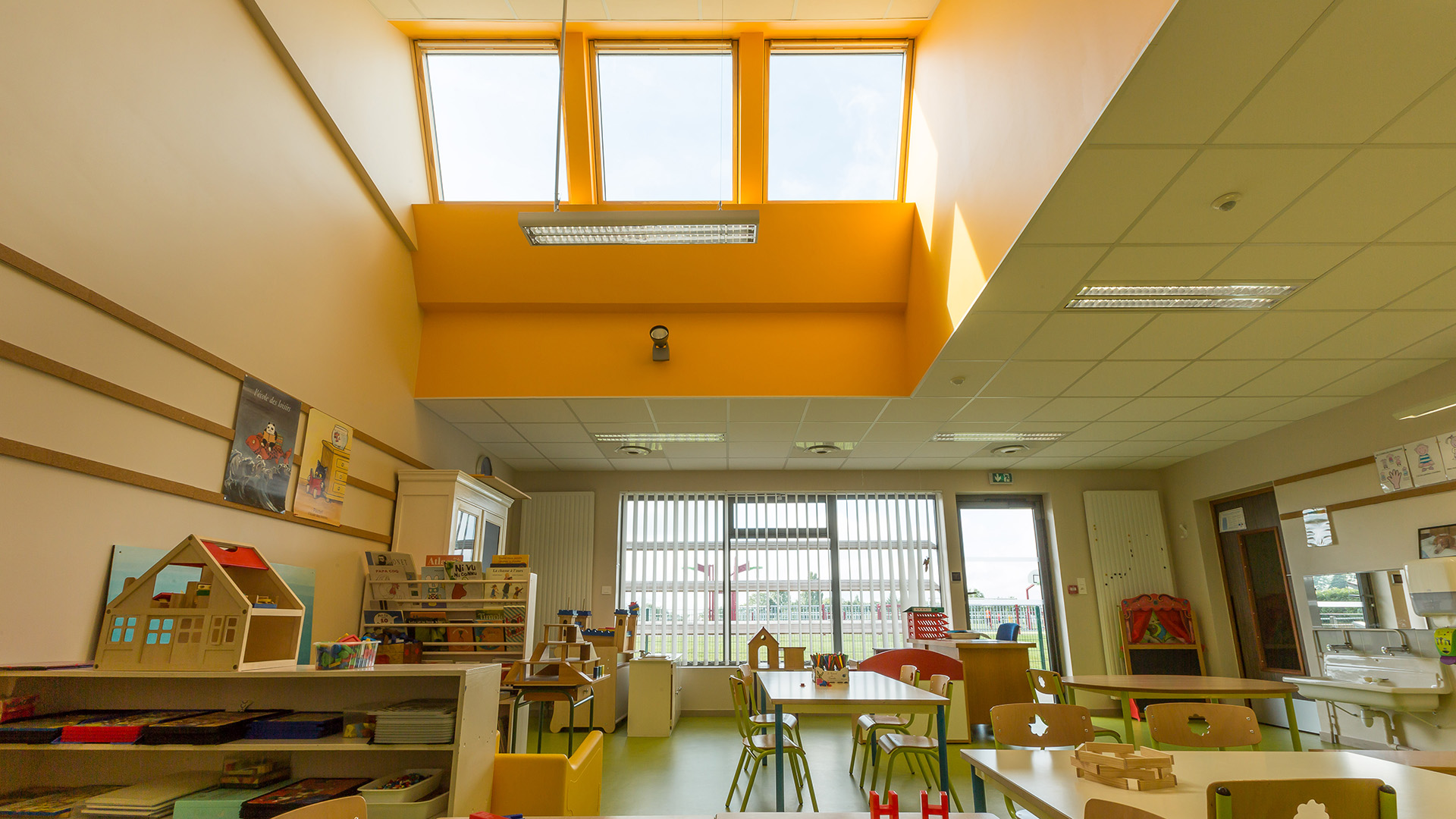
Type of building: Public building (school)
Year of extension built: 2015
Location: Marcey-les-Grèves, France
Size: 750m2
Project lead: VELUX France, in partnership with the town council of Marcey-les-Grèves (Manche) and MEDIECO Conseil et Formation
Improving classroom air quality
In 2016 a school in France was renovated to improve the indoor air quality. During this renovation, the focus was on eliminating volatile organic compounds and CO2 concentrations in the classrooms.
By installing windows that automatically open for ventilation and air circulation in the morning, during breaks and lunch, air pollution was effectively reduced. In addition, the classrooms now have much more natural daylight.
The project also incorporated an air quality monitoring system to ensure that the ventilation is working as planned. This allows this project to be replicated in other schools in France.
Dimensions
In order to comprehensively assess the health of the building in this case study, various dimensions were evaluated, each measured through specific indicators relevant to their respective domains. The following figure presents the ratings for each dimension, providing a visual summary of the building's overall health status.

Data insights for France
Europe’s climate is likely to become more unpredictable, both in terms of winter and summer temperatures. Monitoring the thermal comfort in buildings is therefore important for building health.
This case analysed data for the indicator Thermal comfort from the dimension Improving mental and physical health. It used two data sets representing winter and summer: the Inability to keep home warm and the Cooling Degree Days (the need to cool on hot days).
Affordability
EU data tracking the ability of people to keep their homes sufficiently warm and cool when needed since 2015 shows that we have experienced more cooling degree days in recent years. Furthermore, the ability to keep homes warm is getting worse, especially in France. Healthy building projects such as the raise-the-roof project in France can help people adapt to changes in temperatures.


